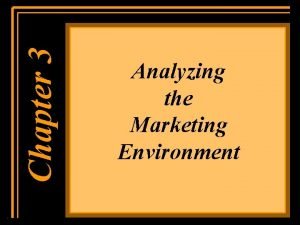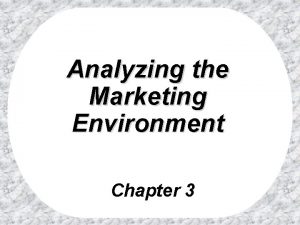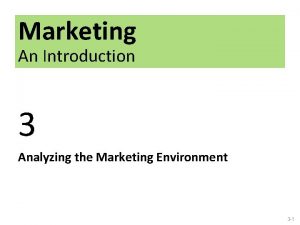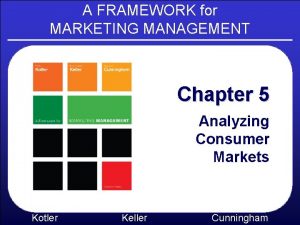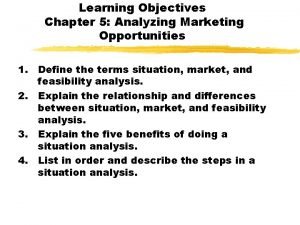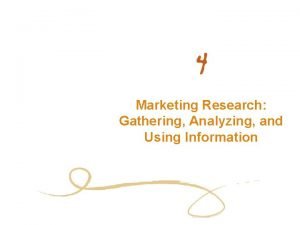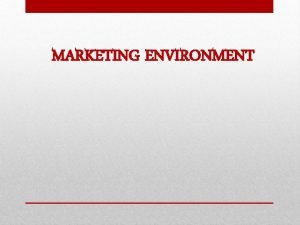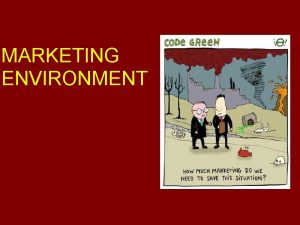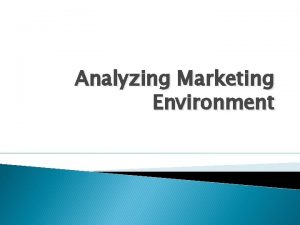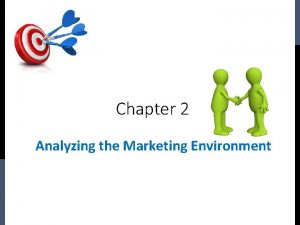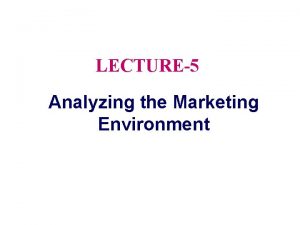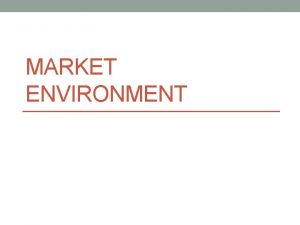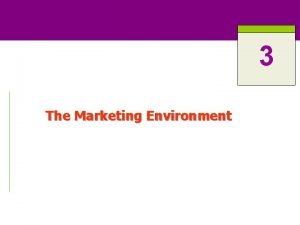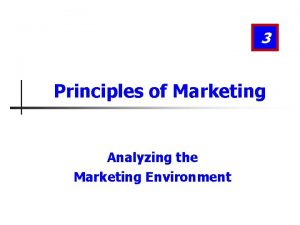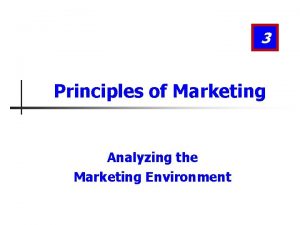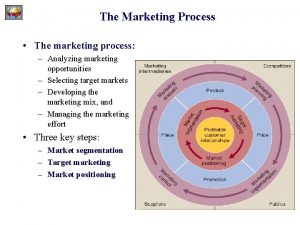Marketing An Introduction 3 Analyzing the Marketing Environment

















- Slides: 17

Marketing An Introduction 3 Analyzing the Marketing Environment 3 -1

Learning Objectives • • • Describe the environmental forces that affect the company’s ability to serve its customers. Explain how changes in the demographic and economic environments affect marketing decisions. Identify the major trends in the firm’s natural and technological environments. 3 -2

Learning Objectives • • Explain the key changes in the political and cultural environments. Discuss how companies can react to the marketing environment. 3 -3

First Stop: Microsoft: Adapting to the Fast. Changing Digital Marketing Environment • The success of Windows increased Microsoft’s revenues, profits, and stock price. • A lag occurred after the millennium from decreased PC sales growth. • People moved on with new digital devices and technologies. • Transformation—released new, improved, or acquired digital products and services 3 -4

Marketing Environment • Outside forces that affect marketing management’s ability to build and maintain successful relationships with target customers • Microenvironment: Actors close to the company that affect its ability to serve its customers • Macroenvironment: Larger societal forces that affect the microenvironment 3 -5

Figure 3. 1 - Actors in the Microenvironment 3 -6

Actors in the Microenvironment • • • Departments within the company impact marketing planning. Suppliers help create and deliver customer value. • Treat suppliers as partners. Marketing intermediaries help sell, promote, and distribute goods. • Intermediaries take many forms. Customer markets must be studied. • Consumer, business, government, reseller and international markets exist. Successful companies provide better customer value than the competition. • Size and industry position help to determine the appropriate competitive strategy. Various publics must also be considered. 3 -7

Figure 3. 2 - Major Forces in the Company’s Macroenvironment 3 -8

Demographic Environment • Demography: Study of human populations in terms of size, density, location, age, gender, race, occupation, and other statistics • Marketers analyze: • • Changing age and family structures Geographic population shifts Educational characteristics Population diversity 3 -9

Economic Environment • Economic factors that affect consumer purchasing power and spending patterns: • Industrial economies • Subsistence economies • Developing economies • Changes in consumer spending • Differences in income distribution 3 -10

Natural Environment • Physical environment and natural resources needed as inputs by marketers or affected by marketing activities • Environmental sustainability concerns have grown steadily over past three decades. • Trends: • Shortages of raw materials • Increased pollution • Increased government intervention 3 -11

Technological Environment • New technologies create new markets and opportunities. • Radio-frequency identification (RFID) is technology to track products through various points in the distribution channel. • Government agencies investigate and ban potentially unsafe products. 3 -12

Political Environment • Forces that influence and limit various organizations and individuals in a society • Laws, government agencies, and pressure groups • Goals of enacting business legislation: • Protect companies from each other • Protect consumers from unfair business practices • Protect the interests of society against unrestrained business behavior 3 -13

Socially Responsible Behavior • Socially responsible companies actively seek out ways to protect the long-run interests of consumers and the environment. • Companies develop policies, guidelines, and other responses to complex social responsibility issues. 3 -14

Cause-Related Marketing • Used by companies to: • Exercise their social responsibility • Build more positive images • Primary form of corporate giving • Controversy—strategy for selling more than a strategy for giving 3 -15

Cultural Environment • Institutions and other forces that affect society’s basic values, perceptions, preferences, and behaviors • Society shapes people’s values and beliefs. • Cultural characteristics that affect marketing decision making: • Persistence of cultural values • Shifts in secondary cultural values 3 -16

Responding to the Marketing Environment • Reactive firms passively accept the marketing environment and do not try to change it. • Proactive firms develop strategies to change the environment. • They take aggressive actions to affect the publics and forces in their marketing environment. 3 -17
 Analyzing the marketing environment summary
Analyzing the marketing environment summary The most dramatic force shaping our destiny is:
The most dramatic force shaping our destiny is: Analyzing the marketing environment
Analyzing the marketing environment Chapter 5 analyzing the marketing environment
Chapter 5 analyzing the marketing environment Financial environment of business
Financial environment of business Analyzing marketing opportunities
Analyzing marketing opportunities Analyzing and using marketing information
Analyzing and using marketing information Marketing information and customer insights are
Marketing information and customer insights are Hình ảnh bộ gõ cơ thể búng tay
Hình ảnh bộ gõ cơ thể búng tay Bổ thể
Bổ thể Tỉ lệ cơ thể trẻ em
Tỉ lệ cơ thể trẻ em Voi kéo gỗ như thế nào
Voi kéo gỗ như thế nào Tư thế worms-breton
Tư thế worms-breton Hát lên người ơi
Hát lên người ơi Môn thể thao bắt đầu bằng chữ f
Môn thể thao bắt đầu bằng chữ f Thế nào là hệ số cao nhất
Thế nào là hệ số cao nhất Các châu lục và đại dương trên thế giới
Các châu lục và đại dương trên thế giới
